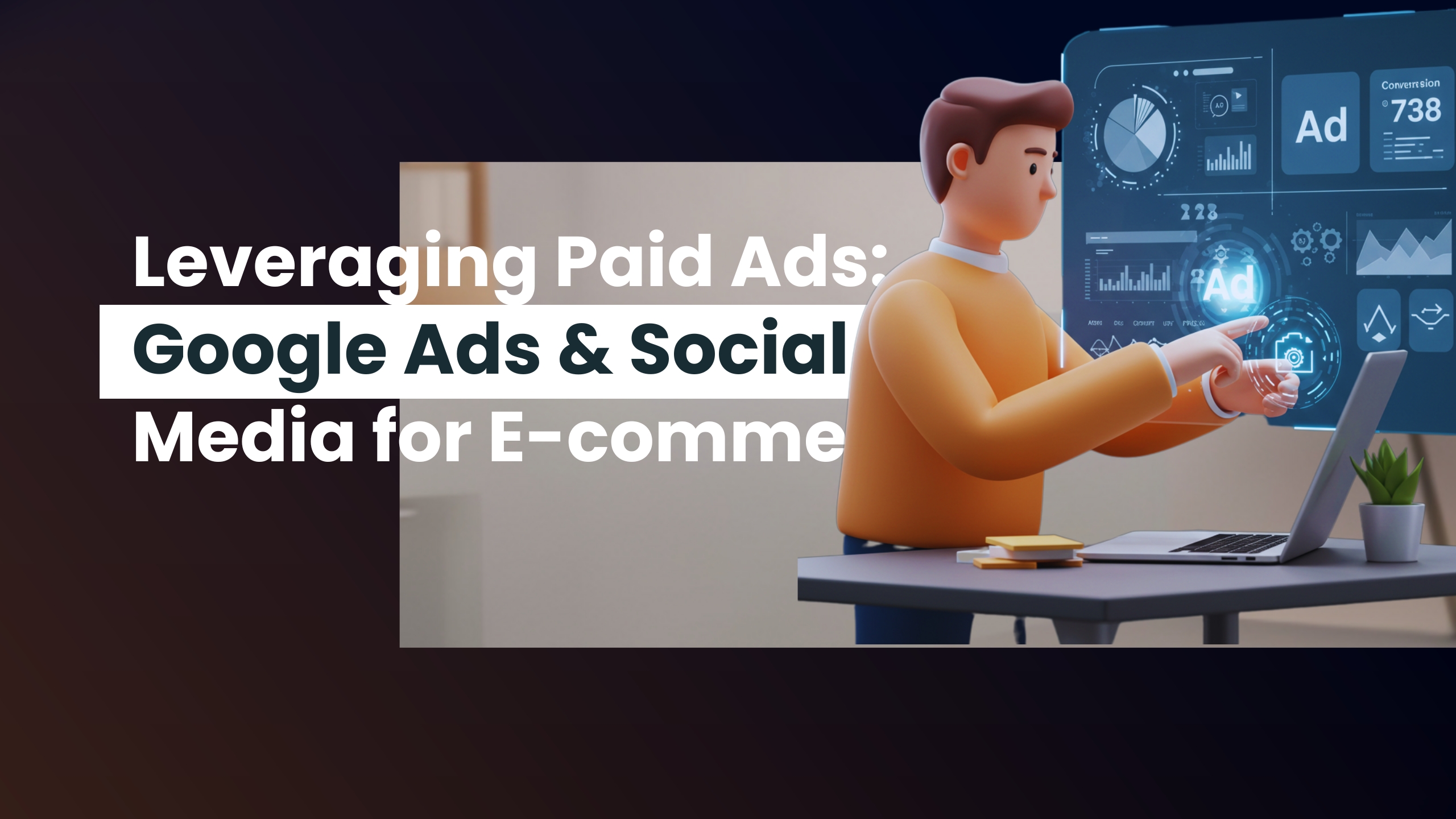Leveraging Paid Ads: Google Ads & Social Media for E-commerce
In today’s fast-paced digital world, paid advertising is one of the most effective ways to drive traffic and boost sales for e-commerce businesses. Google Ads and social media platforms like Facebook, Instagram, and TikTok provide powerful advertising tools to reach your target audience and increase conversions.
- Understanding the Power of Paid Advertising
Paid ads give businesses the ability to:
a. Target specific audiences based on demographics, interests, and behaviors.
b. Gain immediate visibility on search engines and social media platforms.
c. Optimize budget allocation for maximum return on ad spend (ROAS).
d. Scale campaigns based on performance metrics and insights.
- Google Ads: Reaching Buyers with Intent
Google Ads helps e-commerce businesses capture high-intent shoppers actively searching for products.
Types of Google Ads for E-commerce:
a. Search Ads: Appear at the top of Google search results for relevant keywords.
b. Shopping Ads: Showcase product images, prices, and ratings directly on search results.
c. Display Ads: Visually engaging ads placed on various websites and apps.
d. Remarketing Ads: Target previous visitors to encourage them to complete their purchase.
Best Practices for Google Ads:
a. Use high-intent keywords to attract ready-to-buy customers.
b. Optimize product feeds for Shopping Ads with high-quality images and accurate descriptions.
c. Implement negative keywords to filter out irrelevant traffic.
d. Monitor and adjust bids using automated bidding strategies.
- Social Media Advertising: Driving Engagement and Conversions
Social media platforms allow businesses to engage users visually and emotionally, making them a powerful channel for paid advertising.
Best Platforms for E-commerce Ads:
a. Facebook & Instagram Ads: Great for targeting based on interests, behaviors, and demographics.
b. TikTok Ads: Ideal for engaging younger audiences through short-form video content.
c. Pinterest Ads: Effective for showcasing lifestyle-based products.
d. LinkedIn Ads: Useful for B2B e-commerce businesses.
Best Practices for Social Media Ads:
a. Use eye-catching visuals and videos that grab attention instantly.
b. Leverage carousel and collection ads to display multiple products.
c. Utilize retargeting campaigns to re-engage abandoned cart users.
d. Experiment with lookalike audiences to find new potential customers similar to your existing buyers.
- Budgeting and Optimizing Paid Ad Campaigns
Managing ad spend effectively is crucial for maximizing ROI.
a. Start with a test budget and scale successful campaigns.
b. A/B test ad creatives, headlines, and call-to-actions (CTAs).
c. Analyze ad performance metrics like click-through rates (CTR) and cost per acquisition (CPA).
d. Use automated rules to pause underperforming ads and reallocate budget.
- Common Mistakes to Avoid
a. Ignoring audience segmentation: Not refining targeting can lead to wasted ad spend.
b. Skipping ad creatives optimization: Poor-quality images and videos reduce engagement.
c. Lack of performance tracking: Not using analytics to measure success can lead to ineffective campaigns.
d. Underutilizing retargeting: Missing out on potential conversions from previous visitors.
Conclusion
Paid advertising through Google Ads and social media platforms is a game-changer for e-commerce businesses. By using data-driven strategies, optimizing campaigns, and continuously refining targeting, you can maximize your ad spend and significantly boost sales. Start leveraging paid ads today to scale your online store to new heights!

